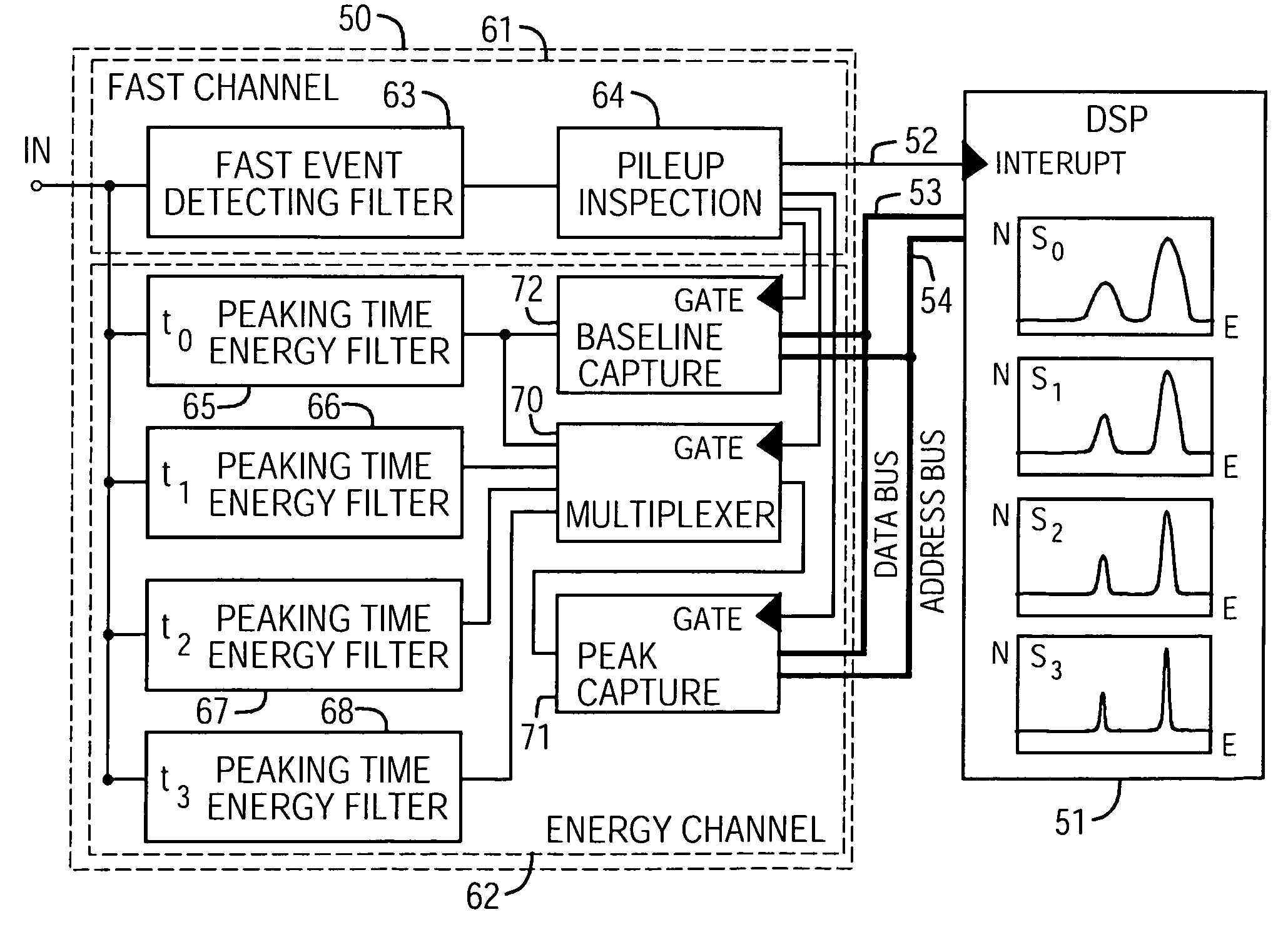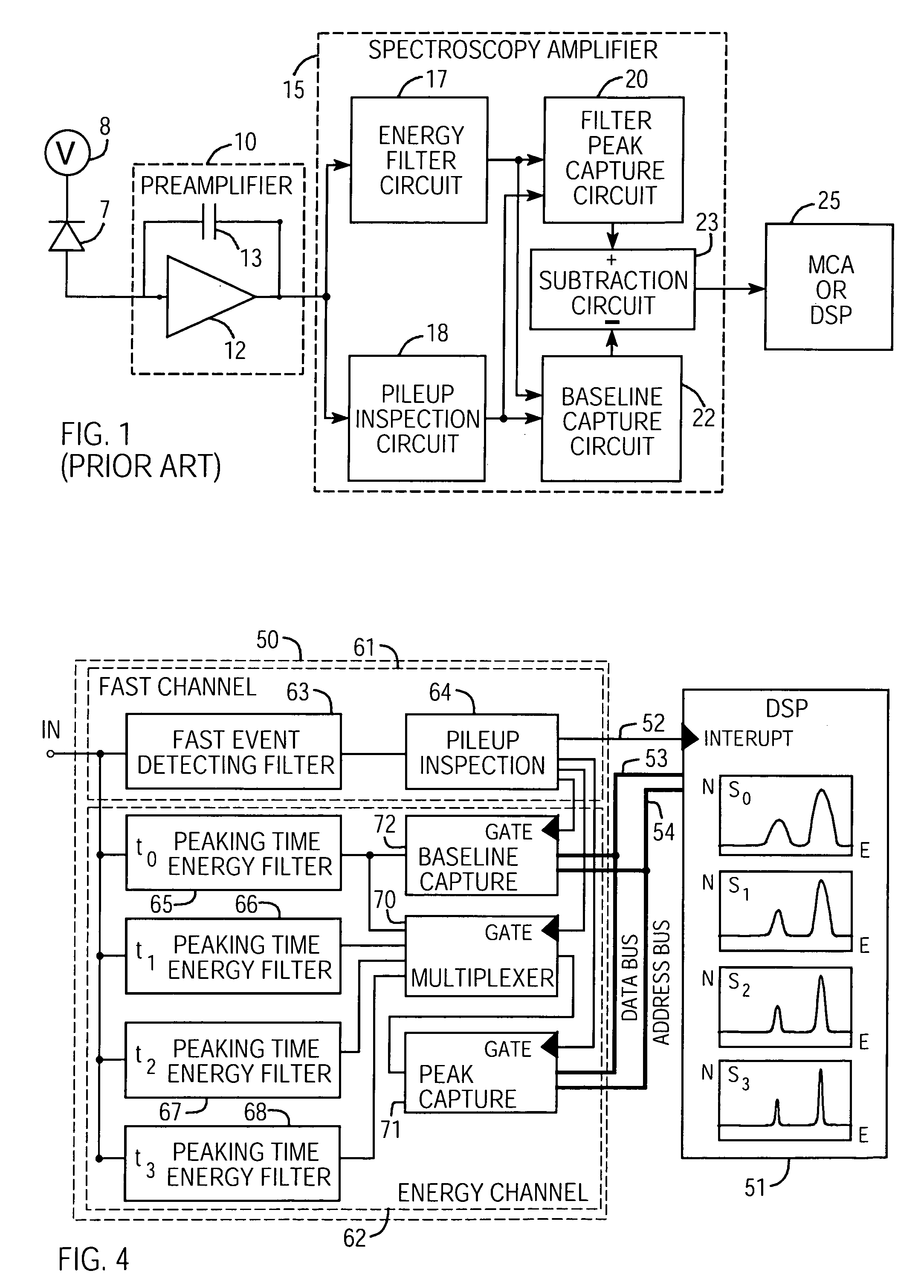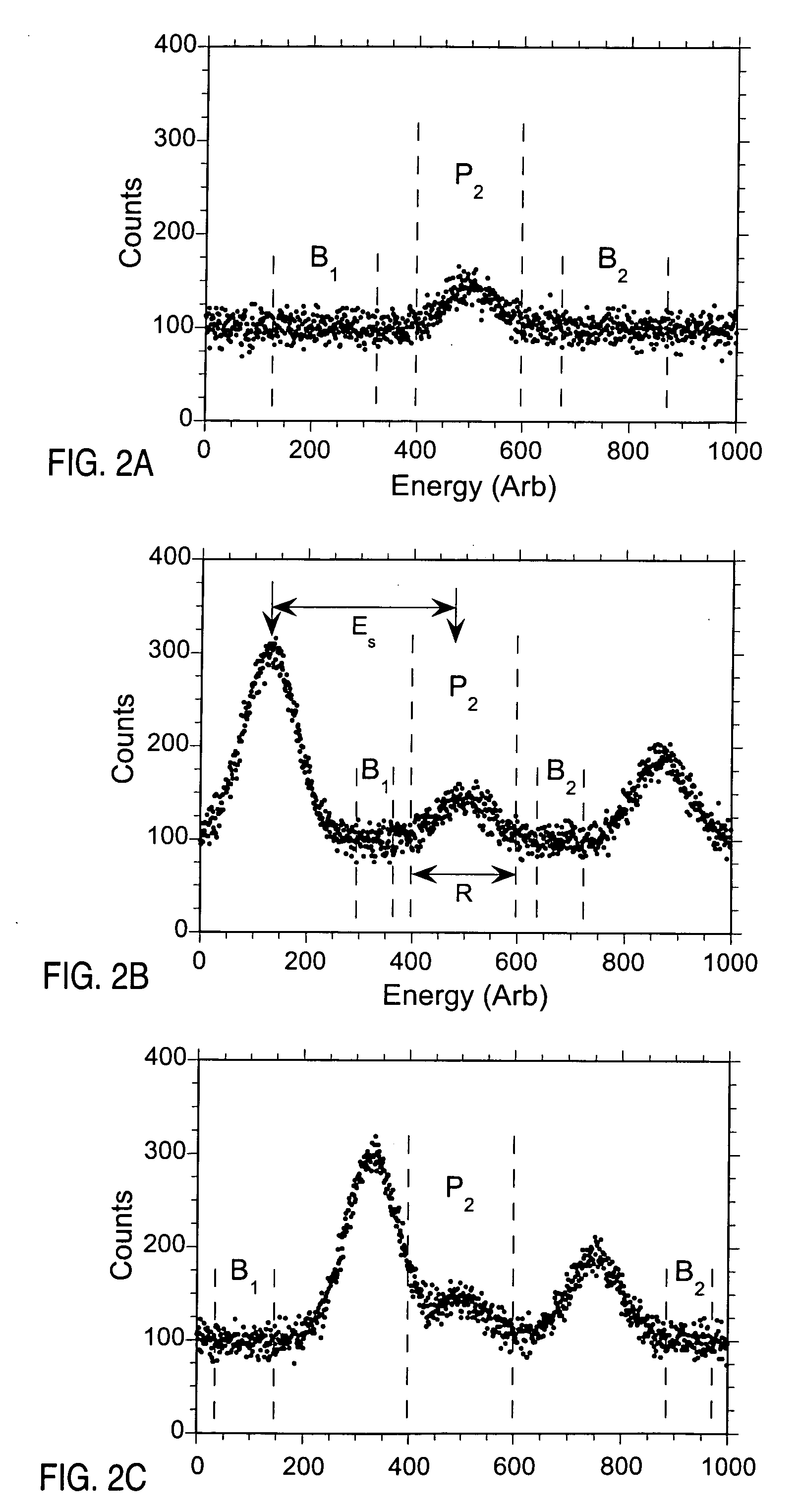Method and apparatus for improving detection limits in x-ray and nuclear spectroscopy systems
a technology of nuclear spectroscopy and detection limits, applied in the field of systems for detecting, counting and measuring the amplitude of steplike signal events, can solve the problems of poor resolution and information loss, and achieve the effect of reducing the number of pulses and maximizing the amount of information obtained about each puls
- Summary
- Abstract
- Description
- Claims
- Application Information
AI Technical Summary
Benefits of technology
Problems solved by technology
Method used
Image
Examples
Embodiment Construction
1. Introduction to Multi-Spectral Binning
[0045] 1.1 A Spectrometer with Four Peaking Times
[0046]FIG. 4 shows a simple spectrometer embodying the inventive concept. It consists of two major blocks: a Spectrometer Body 50 corresponding to block 15 in FIG. 1 and a DSP block corresponding to block 25 in FIG. 1. Communication between the two blocks is handled by an Interrupt Line 52 and Data and Address Buses 53 and 54. The Spectrometer Body 50 comprising a Fast Channel 61 and an Energy Channel 62, wherein the Fast Channel comprises a Fast Event Detecting Filter 63 connected to a Pileup Inspection Circuit 64 while the Energy Channel comprises four Energy Filters 65, 66, 67, and 68; and a Gated Multiplexer 70 connecting the four Filters to a Gated Peak Capture circuit 71. A Gated Baseline Capture circuit 72 allows for baseline measurements to be made. The DSP 51 obtains values from the Gated Peak Capture 71 and Baseline Capture 72 circuits via Data Bus 53 and Address Bus 54. These circ...
PUM
 Login to View More
Login to View More Abstract
Description
Claims
Application Information
 Login to View More
Login to View More - R&D
- Intellectual Property
- Life Sciences
- Materials
- Tech Scout
- Unparalleled Data Quality
- Higher Quality Content
- 60% Fewer Hallucinations
Browse by: Latest US Patents, China's latest patents, Technical Efficacy Thesaurus, Application Domain, Technology Topic, Popular Technical Reports.
© 2025 PatSnap. All rights reserved.Legal|Privacy policy|Modern Slavery Act Transparency Statement|Sitemap|About US| Contact US: help@patsnap.com



